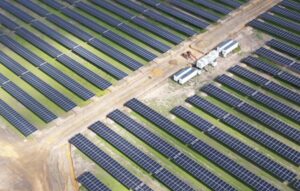Government policies to drive higher energy efficiency standards for existing housing stock could deliver more than $1000 a year in electricity bill savings for average Australian households, a new report has found.
The report, the latest from the Australian Council of Social Service and the Brotherhood of St Laurence, says investment in energy efficiency could provide annual savings ranging from $289 for apartments to $1,139 for houses.
Add rooftop solar to the mix and you have an even bigger opportunity to reduce bills, the report says – particularly for those low-income households that can least afford soaring energy costs.

“Our report finds that government investment in energy efficiency for houses and apartments would generate savings in electricity bills that over time would be higher than the original investment,” said ACOSS CEO Cassandra Goldie in comments on Monday.
“For example, a $5,000 investment by government in energy efficiency for houses would save up to $929 per year in electricity bills, paying off the government’s original investment in savings to the household over less than five years.
“A mandatory energy efficiency standard on rental properties could provide greater savings, up to $1,139 per year.”
Crucially, these savings are on par with the projected savings from the federal Coalition’s promised national regulated retail price – a key policy plank in the Morrison government’s election-year quest to drive down power prices.
And yet little has been done, so far, by either federal or state governments to take advantage of this so-called “low-hanging fruit” in power price reduction.
“It’s bewildering that we keep talking about energy efficiency, and governments agree that it’s commonsense, but do nothing about it,” said ACOSS Senior Energy Advisor Kellie Caught in comments to RE on Monday.
“To me, it’s the most significant finding of the report.”
According to data, Caught says, something like 95 per cent of Australia’s housing stock was built before any sort of energy efficiency standards were introduced in the early 2000s.
“A lot of them are quite poor,” Caught says, pointing to data from the ACT, where there is mandatory disclosure on energy efficiency for properties when selling or renting.
There, she says, “something like 40 per cent of rental properties” were found to have zero energy star ratings.
“People on low incomes that rent properties have no control,” she added.
“They can be living in houses that are one star or zero star energy efficiency. They’re trying to heat or cool their homes, and sometimes sacrificing their own health, because it just costs too much.
“We saw this with the home insulation scheme, where, despite the government incentives, you still had landlords saying they were not interested. Unless it’s mandated, they just won’t do it.”
And then there are the low-income households, where people own their own homes, but can’t afford to upgrade them to higher energy efficiency standards.
“It’s your big ticket items like hot water systems that are not replaced often enough, because there is not the incentive to invest in more efficient models,” says Caught.
“Same with air con or heating, people just cant afford those big ticket items. And there are still places without insulation. It’s the big ticket items that really make the difference with bills.”
Brotherhood of St Laurence executive director Conny Lenneberg confirms this, noting that when the NGO helps low-income households install energy efficient appliances for hot water, heating and cooling, the benefits are “almost immediate: … lower bills, a healthier home and reduction in carbon emissions.”
“We need large-scale ongoing energy efficiency and solar programs for all residents on low incomes, whether they live in their own homes, or in social and community housing or rent privately, so that all benefit regardless of their financial circumstances,” she said.
And the benefits would extend beyond the households, with the promise of reduced associated costs for governments and reduced impact on health.
“There are a lot of gains there, for state and federal governments that work together on investment in (energy efficiency) for public and community housing,” Caught said.
“You would see a significant reduction of demand on the grid, if you invested in energy efficiency, so there’s a lot of opportunity there; (it) could help mitigate those peak power periods and reduce prices.
“It’s not your fridges, it’s your big items like hot water systems, and not replaced often enough, not the incentive to invest in more efficient .
“Same with air-con or heating, people just cant afford those big ticket items. And there are still places without insulation. It’s the big ticket items that really make the difference with bills.”
To help redress this imbalance, the report recommends states and territories should mandate minimum energy efficiency performance standards for rental properties, as part of a broader set of healthy and habitable rental housing standards.
If necessary, it adds, federal or state governments should consider the provision of incentives to landlords to upgrade rental properties, including potential tax mechanisms. And priority should be given to upgrade low-cost rental properties.
It also recommends that federal, state and local governments work together with power retailers to co-fund ongoing programs to provide access to energy efficiency and solar photovoltaic technology for low-income households.
And it wants governments – again, federal and state – to develop and implement programs to improve the energy efficiency and solar access of all social housing, community and other ‘affordable’ housing.








